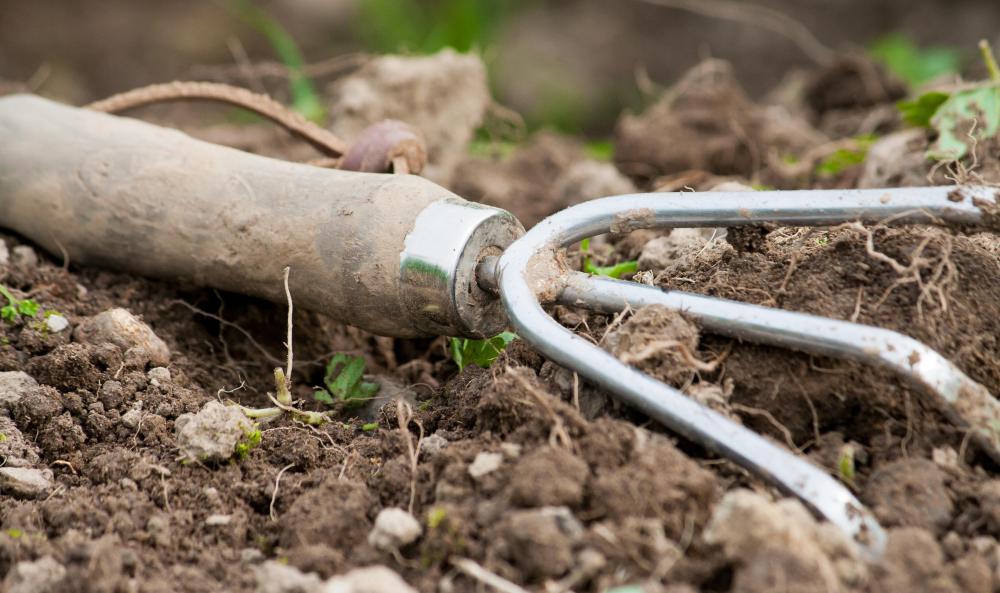At WiseGEEK, we're committed to delivering accurate, trustworthy information. Our expert-authored content is rigorously fact-checked and sourced from credible authorities. Discover how we uphold the highest standards in providing you with reliable knowledge.
What are the Different Types of Yard Tools?
Creating lawns and gardens that are a source of pride and pleasure requires having the proper yard tools. Mechanical tools, such as lawn mowers and edgers, are necessary to keep grass under control and to keep the edges of walkways and flowerbeds crisp and clean. Gas or electric hedge trimmers cut shrubbery down to size, and non-mechanical hand tools take care of the remaining planting and pruning chores.
Lawn mowers are among the most frequently used yard tools. Electric mowers are quiet and do not emit fumes, but they are not as powerful as gasoline-fueled mowers and their range is restricted by the length of their cords. Cordless models are limited by the length of time they can run before being recharged. Gasoline mowers come in push or self-propelled models. An electric mower or a gasoline push mower is fine for a small, flat yard; however, larger lawns and those that are not level are easier to manage with a self-propelled gasoline mower.

Yard tools to edge around sidewalks and flowerbeds also come in gas or electric models. String trimmers are fine for horizontal cuts, but a true edger is the best tool for making the vertical cuts that create sharp definition between the lawn and adjacent flowerbeds or sidewalks. Electric edgers have the same limitations as an electric mower, but for a small yard or courtyard, they are ideal. Gasoline-powered edgers are better suited to larger lawns with lengthier edges to manicure.

Keeping hedges and shrubs from blocking views and over stepping their boundaries requires regular pruning or shearing. For squared hedges and topiaries, electric powered trimmers are a worthwhile investment, especially if the hedges are large or there are numerous specimen plants to trim. Some informal shrubs, such as abelia or azalea, should not be pruned with power trimmers. The only way to keep shrubs of this type looking natural is to prune them by hand. A sturdy pair of hand pruning shears should be included in every set of yard tools.
Digging is a large part of gardening. A standard, round-point shovel and a couple of hand trowels should take care of most digging chores. Planting or removing shrubs and trees is hard work, so one should try a variety of shovels to find a size and weight that is easy to handle. Hand trowels work best for transplanting flats of seasonal annuals and dividing clumps of plants such as lilies. As with all hand tools, finding one that feels comfortable is the most important consideration.
A full complement of landscaping equipment can be expensive, but there is no need to spend a fortune to purchase everything at one time. Yard tools are personal, and a collection should evolve over time as a gardener’s interests expand and his or her preferences develop. A garden fork for distributing mulch and aerating compost, fine Japanese or Korean weeding tools and different styles of hand pruners are useful additions that can be purchased as the need arises and the budget permits.
AS FEATURED ON:
AS FEATURED ON:












Discuss this Article
Post your comments